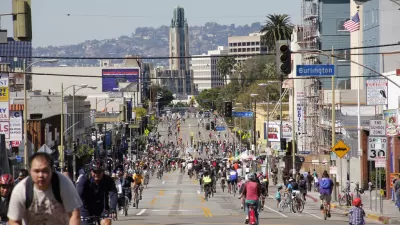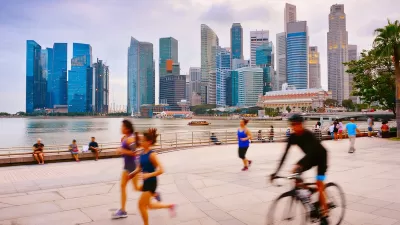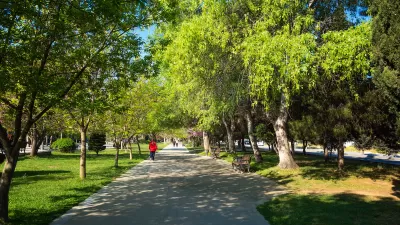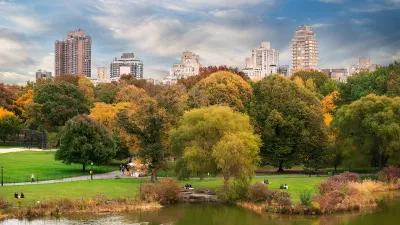There's no one no defining attribute that determines whether a city is healthy or not, as a growing and evolving body of research shows.

When people choose where to live, factors like the school system, the length of work commutes, the cost of living, overall safety, and the area's cultural opportunities all likely influence the decision.
Priorities aren't the same for everyone, however. According to research, individuals in the United Kingdom often base their living decisions on the cost of housing in the area, how far they were from friends and family, and whether they grew up in the area.
When researchers from the Center for Demographics and Policy at Chapman University worked on a project to determine the living preferences for young professionals in the United States, the cost of housing, weather, and access to parks and green spaces were the top three factors. The respondents also cared about family-friendliness and the quality of K-12 education in an area.
Those considerations are undoubtedly crucial, but individuals should also consider public health when deciding where to live. Everything from walking trails to water cleanliness can make some places healthier than others—or mean that a person is especially likely to become unhealthy while living there.
Here's a look at six of the healthiest and least healthy places around the world.
Cities Among the Healthiest Places
Researchers have taken numerous aspects into account when determining the factors that constitute a healthy city. Some have calculated residents' body mass index and access to gyms when evaluating health, while others polled or interviewed people in an area to get a first-hand perspective on how healthy they felt.
Air and water quality are commonly measured factors, and some researchers have connected prevention to public health outcomes. Researchers have also investigated the average cost of a doctor's visit.
Most studies on the subject of public health outcomes recognize that residents need things like access to health care and nutritious foods, as well as factors that might initially get overlooked, such as opportunities to connect with neighbors.
1. Miami, Florida
According to the 2020 MINDBODY Wellness Index, Miami, Florida, topped the list as the healthiest U.S. city. This study assessed factors like access to health services, body mass index, and alcohol consumption when calculating the rankings.
Research found that 80% of respondents in Miami work out at least once a week, and 31% make self-care a priority by frequenting businesses such as salons and spas. Additionally, 62% of Miami residents get a full night's sleep. It's also common for people who live in Miami to show loyalty to the companies or entrepreneurs who help them stay healthy, from physical therapy clinics to personal trainers and more.
2. Arlington, Virginia
When the American College of Sports Medicine released its 2019 collection of the healthiest U.S. cities for the ACSM/Anthem Fitness Index, Arlington, Virginia, earned the title of "America's Fittest City," according to 33 factors. Some of those considerations included whether residents reported having good or excellent health, low rates of smoking, and whether authority figures encourage residents to exercise.
"We challenge city leaders, regardless of where their community ranks on the ACSM/Anthem Fitness Index, to take bold and decisive action toward building and maintaining infrastructures that promote fitness," said Barbara Ainsworth, chair of the American Fitness Index Board.
One of the measurements that impacted how a city ranked related to pedestrians facilities. Pedestrian facilities are not the only example of infrastructure relating to public health, but it's a prominent opportunity for city planners to influence public health. Safe, well-lit walking paths allow residents to make the choice to walk instead of drive and increase their overall health.
3. Amsterdam, the Netherlands
Some lists of the healthiest places to live are particularly all-encompassing in the ways they view the locations optimal for public health. When Spotahome, a website specializing in relocation information, published its healthy city list, it addressed factors not covered elsewhere, such as the number of fast-food outlets, average gym ratings, the number of sunny days, and even how many vacation days people get.
Spotahome also measured air and water quality for the chosen locations. Water quality, in particular, is often taken for granted. However, every year, unclean water makes a billion people ill and kills 1.8 million.
Amsterdam was the healthiest city on Spotahome's list of more than 80 global locations. The reasons for Amsterdam's recognition include a large numbers of amenities, despite the city's compact size, its status as a bike-friendly city, and its second-highest number of electric car charging facilities among all the world's cities.
The Unhealthiest Cities
If people in a city typically have poor diets or are continually exposed to high levels of pollution, overall public health can decline. Additionally, if residents don't feel able or encouraged to have an active lifestyle, people may put themselves at a higher risk for preventable health problems.
1. Brownsville, Texas
Often, the economic conditions in a city dictate its public health rankings, affecting the size of the budget planning professionals can devote to infrastructure improvements that enhance public health outcomes. When WalletHub compared more than 170 of the most-populated U.S. cities by assessing 42 indicators of good health, including the cost of a medical visit and the number of gyms per capita, Brownsville, Texas, ranked the lowest.
However, it's worth noting that 31 percent of Brownsville residents live in poverty. In contrast, only 16 percent of the residents of Miami-Dade County—a region that includes the city of Miami, mentioned earlier as one of the healthiest cities—live in poverty. Generally, the more disposable income people have, the easier it is for them to make healthier choices, such as to join a gym, get a checkup or choose fresh, nutritious food to eat.
2. Gurugram, India
The association between Beijing, China and air pollution is so common that some people assume it's the most polluted city in the world.
However, Beijing has made such a significant improvement in air pollution that experts cite it as a model for other cities to follow. "This improvement in air quality didn't happen by accident. It was the result of an enormous investment of time, resources and political will," said Joyce Msuya, acting executive director of UN Environment.
Perhaps officials in Gurugram, India, need to pay attention to what authorities in Beijing did well. Gurugram recently ranked as the world's most polluted city, joining six other Indian cities comprising the top ten places on the most-polluted list. The most polluted city in China, for reference, is Hotan, coming in as the seventh entry.
Gurugram residents mention numerous health-related complaints, such as difficulty breathing and itching eyes due to the heavy smog. Some pedestrians who live in this heavily polluted city say that air pollution prevents seeing roads while crossing them, or that it's so hard to breathe that they can't walk to get around at all.
3. Oklahoma City, Oklahoma
Oklahoma City, Oklahoma, has such a severe lack of grocery stores that city council members voted that dollar stores in a particular ZIP code containing 11,000 residents must stock fresh produce because there is no grocery outlet to provide it. Also, in the previously cited ASCM/Anthem Fitness Index that gave Arlington, Virginia, the top spot, Oklahoma City was the lowest-ranked location out of 100 cities.
One recent event that could have affected the rating is that Oklahoma City is one of the two cities in the state—Tulsa is the other—where air quality levels were below acceptable standards for the highest number of days in a row. Oklahoma City recorded 19 such days, whereas the total reached ten for Tulsa.
No Single Factor Determines the Healthiest Places to Live
These lists emphasize that no defining attribute guarantees a healthy—or unhealthy—city. Curbing pollution is crucial to public health outcomes, as well as providing paths that urge people to walk or bike to stay fit. Yet those ideas are just the start.
Planning professionals must take a multifaceted approach to promote public health for the well-being of all residents.

Maui's Vacation Rental Debate Turns Ugly
Verbal attacks, misinformation campaigns and fistfights plague a high-stakes debate to convert thousands of vacation rentals into long-term housing.

Planetizen Federal Action Tracker
A weekly monitor of how Trump’s orders and actions are impacting planners and planning in America.

In Urban Planning, AI Prompting Could be the New Design Thinking
Creativity has long been key to great urban design. What if we see AI as our new creative partner?

How Trump's HUD Budget Proposal Would Harm Homelessness Response
Experts say the change to the HUD budget would make it more difficult to identify people who are homeless and connect them with services, and to prevent homelessness.

The Vast Potential of the Right-of-Way
One writer argues that the space between two building faces is the most important element of the built environment.

Florida Seniors Face Rising Homelessness Risk
High housing costs are pushing more seniors, many of them on a fixed income, into homelessness.
Urban Design for Planners 1: Software Tools
This six-course series explores essential urban design concepts using open source software and equips planners with the tools they need to participate fully in the urban design process.
Planning for Universal Design
Learn the tools for implementing Universal Design in planning regulations.
Gallatin County Department of Planning & Community Development
Heyer Gruel & Associates PA
JM Goldson LLC
City of Camden Redevelopment Agency
City of Astoria
Transportation Research & Education Center (TREC) at Portland State University
Jefferson Parish Government
Camden Redevelopment Agency
City of Claremont






























